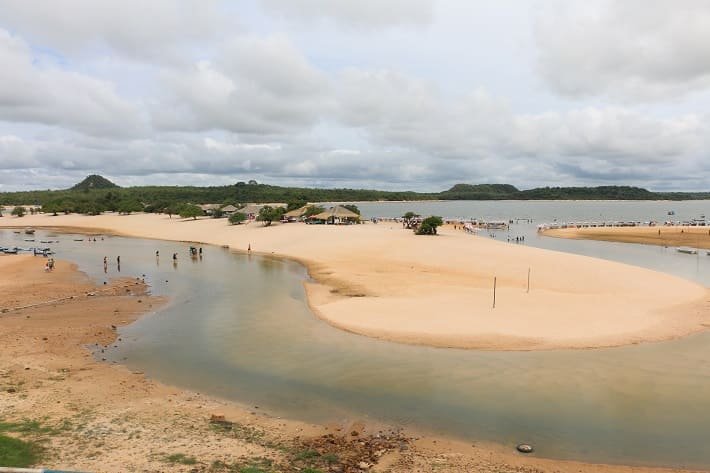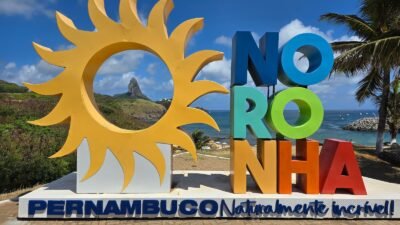My first impression of Alter do Chão in Brazil couldn’t have been better. On my first tour, I set out to explore the stunning river beaches along the Arapiuns River, a tributary of the Tapajós River.
The warm, crystal-clear waters of these beaches make you want to stay there all day. Additionally, the sandbanks that form along the shores create an indescribable landscape in the heart of the Amazon Rainforest. It’s no wonder Alter do Chão is called the “Amazonian Caribbean” and was once named the best beach destination in Brazil by the British newspaper The Guardian.
During the Arapiuns River tour, besides swimming in these breathtaking waters, you’ll also have the chance to visit riverside communities and learn about their sustainable activities in the forest.
Check out below how our experience went—after all, the photos speak louder than words!
Itinerary
1. Boarding
The tour begins at 8:30 AM with boarding at the Tourist Assistance Center (CAT), a wooden structure on the banks of the Tapajós River in Alter do Chão. During the so-called ‘Amazonian summer’, boat tours can only depart from this location.
2. Urucureá Community

After a 50-minute boat ride, we arrived at a small bay in the Urucureá Community, located 15 km from downtown Santarém. We disembarked on a beach in front of a local family’s home. The scenery was breathtaking, but our visit would be brief—just enough time to explore some local handicrafts.

Inside a shed, there was an exhibition of various products made from tucumã palm leaves, including baskets, placemats, fruit bowls, coasters, bags, and other handcrafted items created by the community.
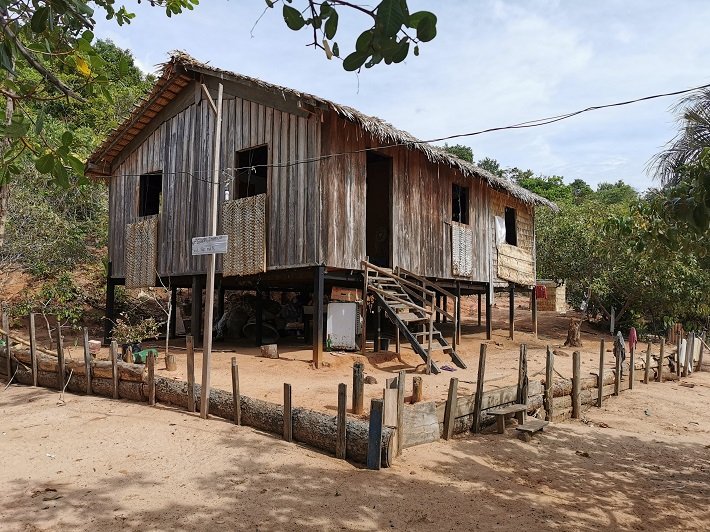
We didn’t venture deep into the community, staying only around the residence. In a higher area, a wooden restaurant was under construction. Meanwhile, some monkeys in the trees entertained visitors. Needless to say, they showed impressive dexterity and skill in ‘stealing’ the bananas offered to them.

The Urucureá Community is part of the Lago Grande extractive settlement project, with handicrafts and tourism as its main economic activities. Around 40 women from the village are members of Tucumarte, a group of artists who work with tucumã palm leaves. The art of weaving these leaves is a tradition passed down from mother to daughter.
The harvesting of palm leaves is done sustainably. The leaves, used in basketry, are typically collected from residents’ homes or designated management areas defined by the community.
After harvesting, the thorns are removed, and the leaves are left to dry in the sun. In the past, artificial dyes were used for coloring, but today, pigments are sourced directly from the forest. Nature provides all the necessary colors to decorate the baskets—for example, annatto seeds produce a rich red hue.(source: TV Cultura – Reporter ECO).
3. Ponta do Toronó

From the Urucureá Community, we headed to Ponta do Toronó (literally Toronó Point), a winding strip of sand that extends into the Arapiuns River, creating several natural swimming spots. The area is quite rustic and has no infrastructure. Click here to see the location on Google Maps.

The water is warm, crystal-clear, and simply delightful. We spent only 30 minutes in this paradise, but I could have stayed all day. Some visitors booked private tours, set up their umbrellas, and enjoyed a much longer stay.
4. Ponta Grande

From Ponta do Toronó, we continued along the Arapiuns River to Ponta Grande. Located on the right bank of the river, Ponta Grande is also a strip of white sand with natural pools, offering several places to bathe on both sides. Check out the featured photo as well!
Honestly, I didn’t notice much difference between Ponta do Toronó and Ponta Grande, but I still prefer the former.
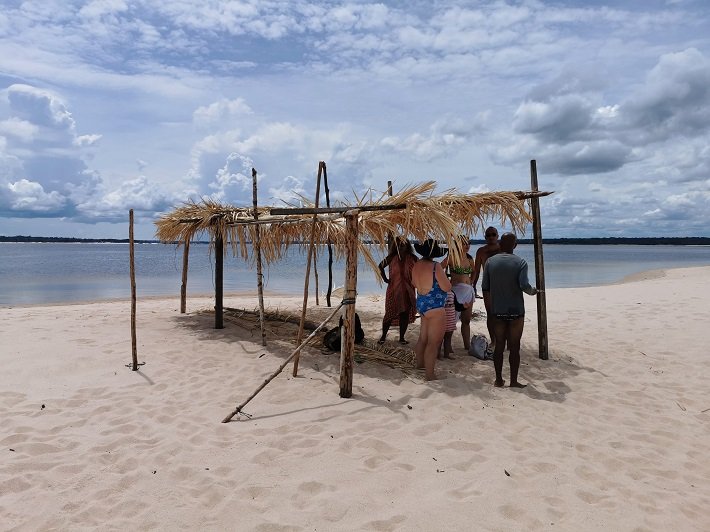
At Ponta Grande, there was also no infrastructure, which made the connection with nature feel more genuine. The only structure was a shed covered with palm leaves, where some people from our group sought shelter from the intense sun.
It was almost lunchtime when our boatman offered us tangerines and slices of delicious pineapple.
5. Coroca Community
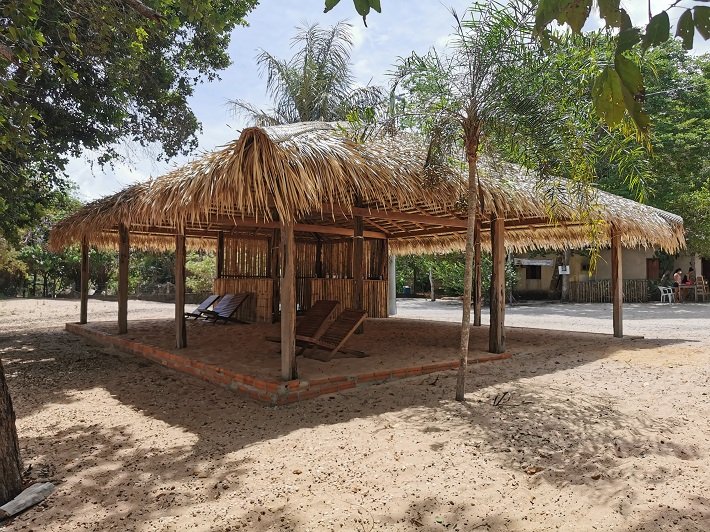
At lunchtime, we headed to the Coroca Community, which is home to approximately 24 families, totaling 75 people.
Located on the left bank of the Rio Arapiuns, it is one of the most developed communities in the region, engaging in various economic activities, such as tourism, handicrafts, beekeeping, turtle breeding, and food production. The Coroca Community is also part of the Gleba Lago Grande Agroextractivist Settlement Program.
When we arrived, lunch was already prepared. The food was homemade and delicious. Several dishes were served to the group, including roasted fish, vinaigrette, beans, rice, and farofa. For drinks, there was cupuaçu juice. The lunch price was about US$ 8 per person (other drinks were charged separately).

After lunch, we took the Coroca Trail, a peaceful 4 km walk through the forest. We visited the apiary, which was established in 2006 and is used by the community for honey production. The bees raised are the Jandaira, which produce between 300 and 400 ml of honey per hive, twice a year.
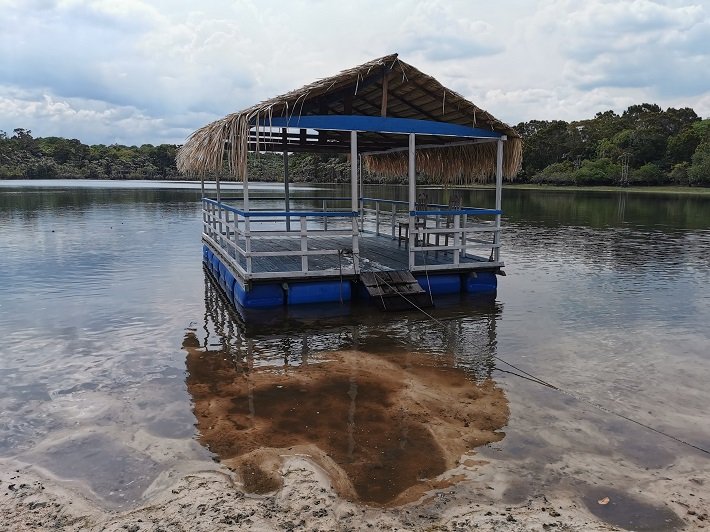
Next, we visited the Community Lake, where turtles are raised. The project began in 2000 when 3,500 turtles were brought to the site. However, during a flood in 2008, most of them escaped, leaving about 500 today.
We took a barge (without a motor, pulled by a rope) to reach the center of the lake.
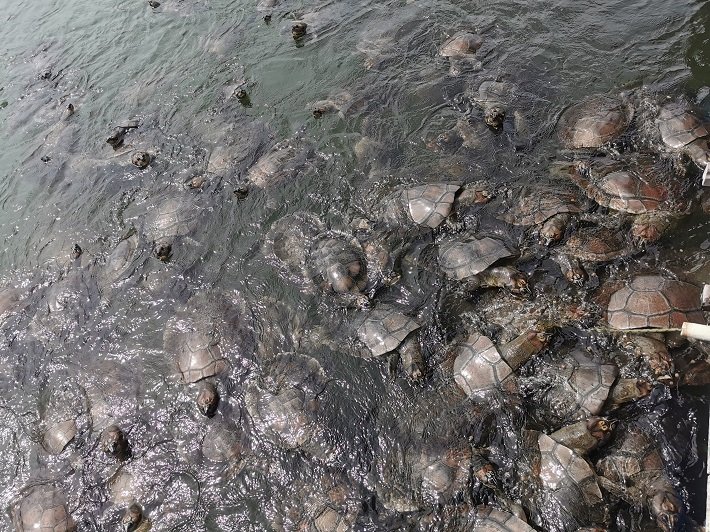
The community guide threw some feed, and they gathered around the barge. Impressive the size of the turtles! We also met the baby turtles, which are kept in tanks near the restaurant.
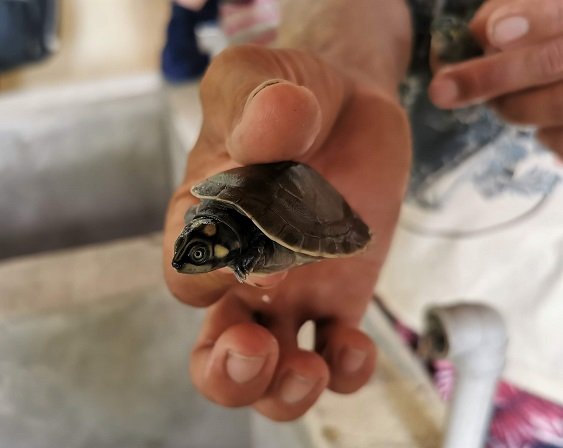
At the end of the trail, why not stop by the community shop? They had fruit creams, truffles, tapioca cookies, sweets, and various types of honey. There were also several items made from tucumã palm leaves, just like in the Urucureá Community.
6. Ponta do Icuxi
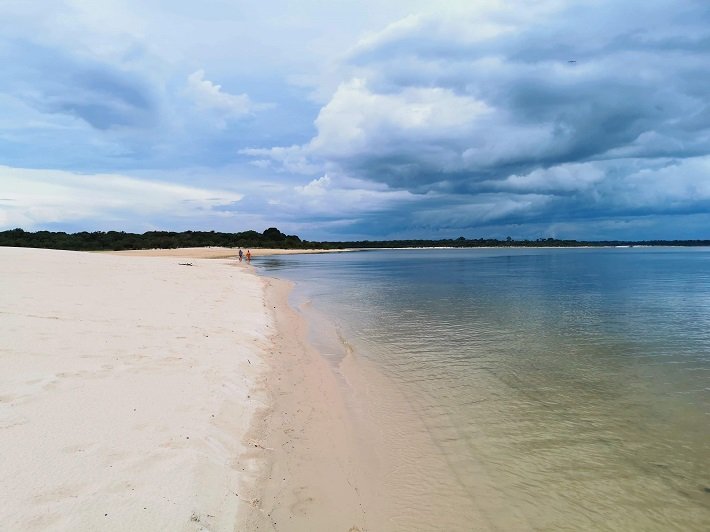
From the Coroca Community, we began heading back to Alter do Chão. It was already 4 PM when we disembarked at Ponta do Icuxi, still on the Arapiuns River. It’s also a strip of sand along the river, forming a beach. However, our guide recommended that we stay only on one side of the sandbar to avoid stingrays.
Stingrays pose the greatest risk to swimmers. If you inadvertently step on one, you may get stung. The stingray venom can cause pain, swelling, and local necrosis.
“Measuring almost 10 centimeters in length, the freshwater stingray’s spine is a serrated, knife-shaped bone structure, covered by glandular tissue that breaks off during the sting, releasing venom into the victim’s body.” (source: Como um punhal – Research Magazine/Fapesp).
Stingrays tend to stay in calm, muddy waters. They can also be found near large boats.

Avoid these muddy waters. It is recommended that, when entering the water, you shuffle your feet along the bottom. When stingrays sense movement in the sand, they will move away. Follow your boatman’s advice!
7. Ponta do Cururu

As we were leaving the Rio Arapiuns, our last stop was at Ponta do Cururu, a traditional spot where boats gather to enjoy the sunset. The scenery is magnificent. We entered the water, and every now and then, a dolphin would dive in front of us. But it all happens very quickly—hard to capture.
Ponta do Cururu is located on the Tapajós River, very close to the village of Alter do Chão. We also visited it during our trip to the Canal do Jari.
We returned to Alter do Chão around 6 PM, very satisfied with our first tour of this incredible tourist destination.
Booking the Rio Arapiuns tour
To take the tour to Rio Arapiuns, you must hire a boatman in Alter do Chão. It’s recommended to ask at your own inn for assistance. Avoid hiring boatmen on the street, as they may charge significantly more.
In our case, Eduardo, the owner of Pousada Sombra do Cajueiro, where we stayed, arranged everything for us.
We joined the group of Reinaldo, owner of Hostel Pousada do Tapajós (Phone Number +55 93 99210-2166).
Reinaldo is an honest and responsible boatman. He brought along Ivan, a friendly and entertaining Colombian who, during his travels around the world, was spending some time in Alter do Chão and served as his assistant.
By the way, just Ivan’s company made the tour worthwhile!

